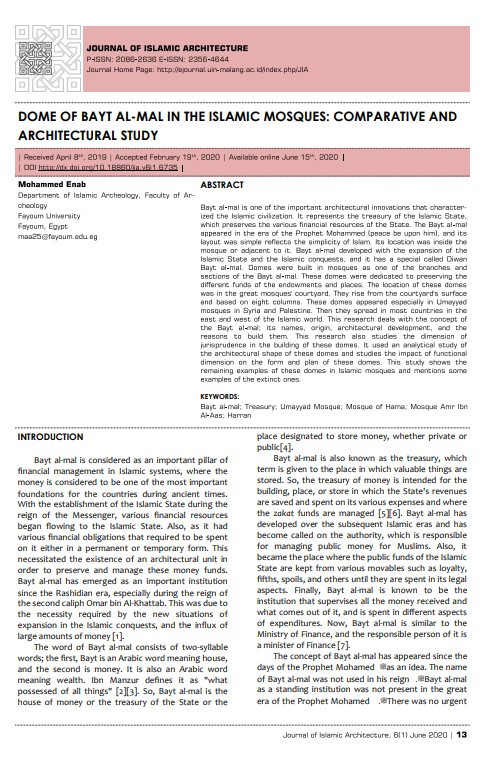
Bayt al-mal is one of the important architectural innovations that characterized the Islamic civilization. It represents the treasury of the Islamic State, which preserves the various financial resources of the State. The Bayt al-mal appeared in the era of the Prophet Mohammed (peace be upon him), and its layout was simple reflects the simplicity of Islam. Its location was inside the mosque or adjacent to it. Bayt al-mal developed with the expansion of the Islamic State and the Islamic conquests, and it has a special called Diwan Bayt al-mal. Domes were built in mosques as one of the branches and sections of the Bayt al-mal. These domes were dedicated to preserving the different funds of the endowments and places. The location of these domes was in the great mosques’ courtyard. They rise from the courtyard’s surface and based on eight columns. These domes appeared especially in Umayyad mosques in Syria and Palestine. Then they spread in most countries in the east and west of the Islamic world. This research deals with the concept of the Bayt al-mal; its names, origin, architectural development, and the reasons to build them. This research also studies the dimension of jurisprudence in the building of these domes. It used an analytical study of the architectural shape of these domes and studies the impact of functional dimension on the form and plan of these domes. This study shows the remaining examples of these domes in Islamic mosques and mentions some examples of the extinct ones.
I agree to the terms outlined below:
You agree to upload and assign Mosqpedia Database the rights to use the content worldwide and in perpetuity across all current and future media platforms. Mosqpedia Database may edit, copy, adapt and translate your contribution.
The content will be distributed under the Creative Commons Attribution-Deed – Attribution-NonCommercial-NoDerivatives 4.0 International – Creative Commons
All data will be stored in line with data protection regulations.